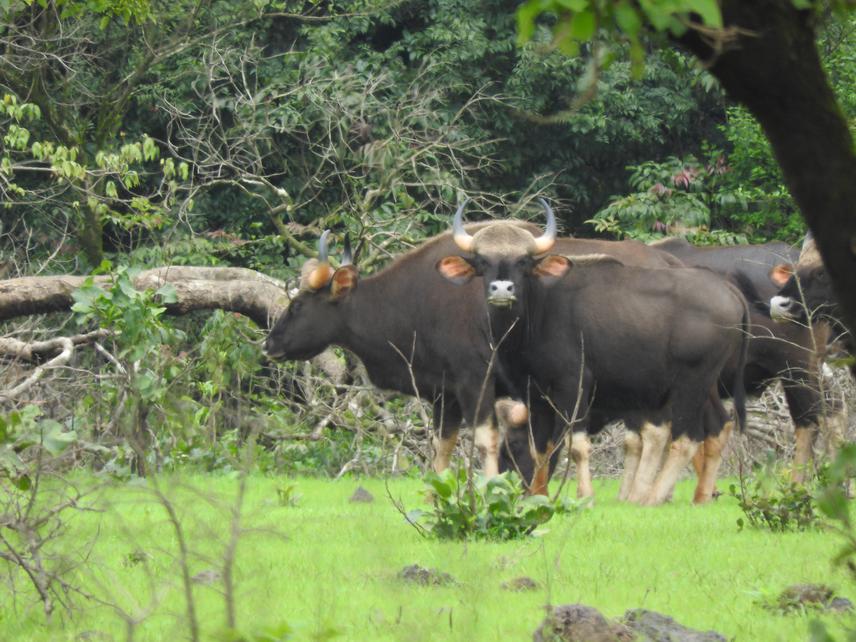Articles featuring the project.
Girish Arjun Punjabi
The project would assess relative abundance of wild ungulates and map their distribution using an occupancy-modelling approach in the region. It also aims to understand hunter motivations and intensity of hunting in the region to enable sound mitigation measures.

Herd of Gaur.
Tropical forest ungulates are threatened due to a multitude of factors, one of the most serious being hunting for bushmeat (Fa and Brown 2009). Large and medium-sized ungulates form preferred prey for large carnivores (e.g. tigers, Karanth et al. 2004), and play important roles in forest ecosystems (Wright 2003). Local hunting is widespread across the tropics, including the Western Ghats (Madhusudan and Karanth 2002), but impacts of hunting and its intensity are variable and lesser understood. Hunting of ungulates in India is illegal, yet different motivations still drive hunting across many forests. Management of hunting thus requires an understanding of hunter motivations, hunting intensity, and their impact on relative abundance of ungulates.
This project aims to assess relative abundance of wild ungulates and hunting intensity in the Tillari region of the northern Western Ghats, India. This forested region is a vital connecting link for large mammals at the tri-junction of the states of Maharashtra, Goa, and Karnataka. About 40 villages occur in the study region with village sizes ranging from 40 to 400 households. Most households engage in agriculture and/or cash-crop plantations, and seem dependent on forests for firewood, minor forest produce, and medicinal plants. A few large estates have cleared much forest to grow cash crops such as rubber and pineapple.
Relative abundances of ungulates (gaur Bos gaurus, sambar Rusa unicolor, Muntjac Muntiacus muntjac, wild pig Sus scrofa, and four-horned antelope Tetracerus quadricornis) would be assessed using an occupancy-modelling approach. This approach uses heterogeneity in detection probability of ungulate signs to assess abundance of animals (Royle and Nichols 2003). Sign surveys to assess ungulate abundance would be the most efficient method to assess animal abundance (e.g. Gopalaswamy et al. 2012), as our study region has thickly vegetated areas and highly undulating terrain with poor chances of direct sightings of wildlife.
The project also aims to evaluate the intensity of local hunting through questionnaires with local hunters, villagers, and forest department staff to assess the impact of hunting on ungulates. The project would assess hunting intensity and offtake levels of ungulates and compare them to relative abundance of ungulates from the field study to understand its impact on ungulates.
Overall this project would help set management benchmarks through rigorous data on ungulate abundance and mitigate hunting through outreach and involvement of villagers and forest department. The larger goal is to better conserve this fragile region through local support and improved management.